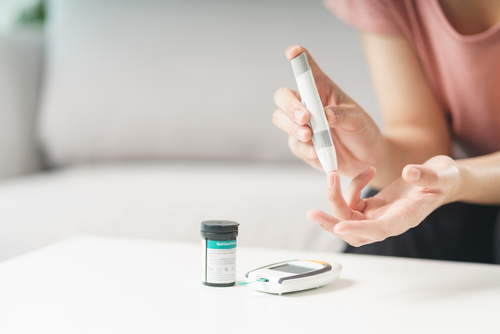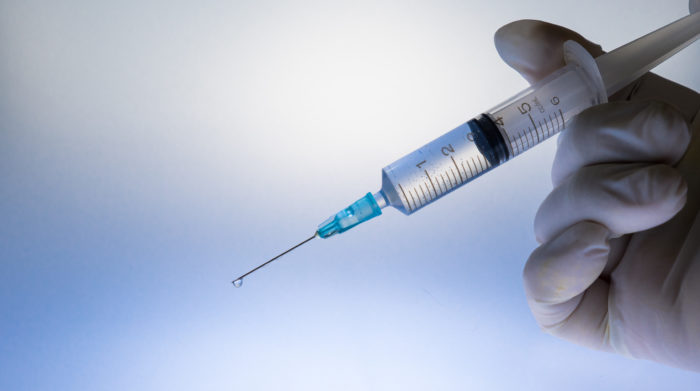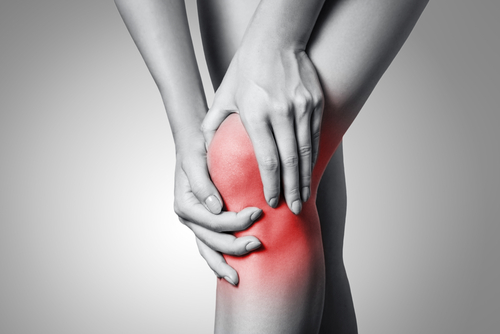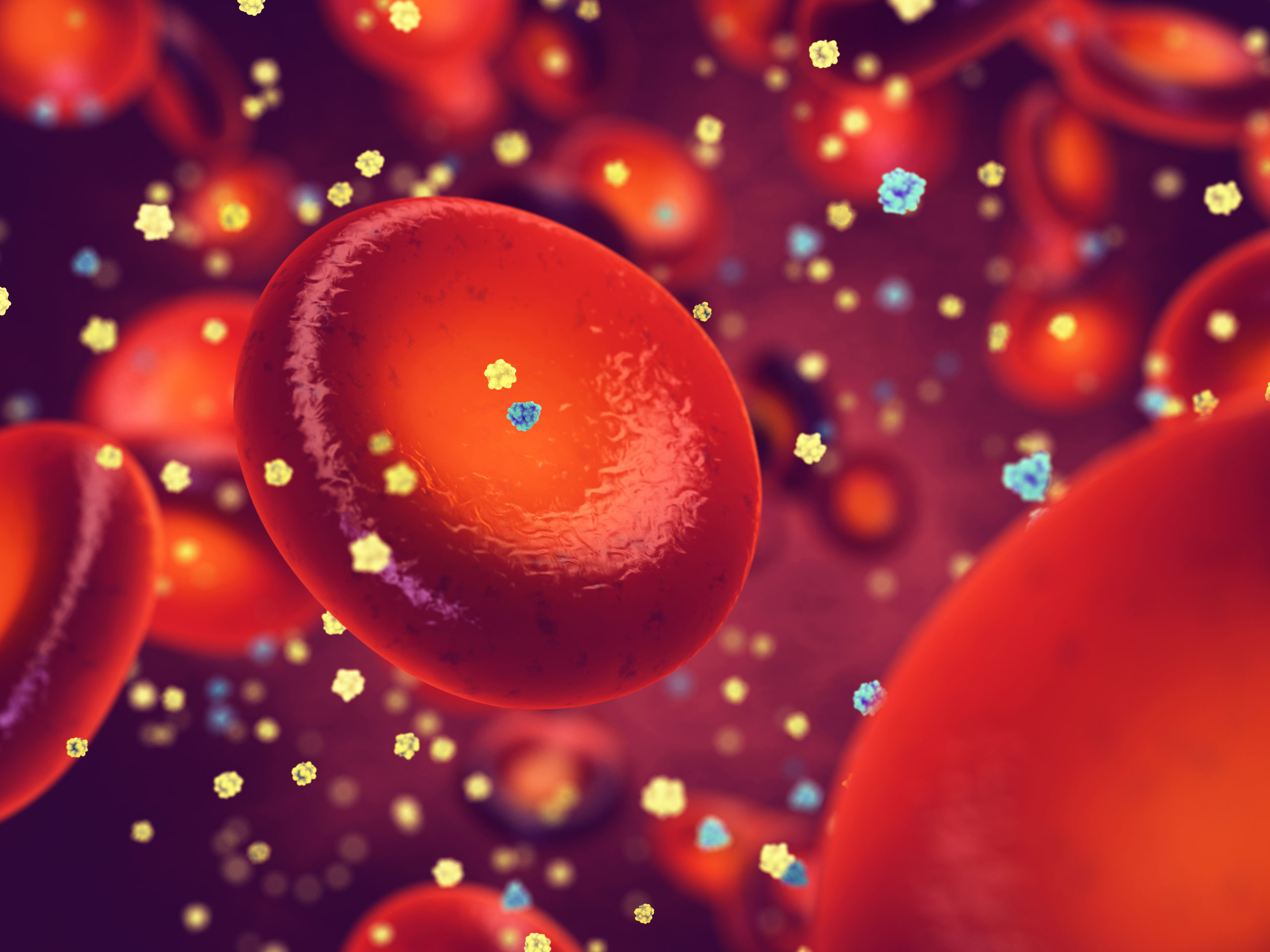
Dr. Jonathan Wright details niacinamide
October 13th, 2022Since 1976, Jonathan Wright, M.D., has written about the latest natural healing discoveries in his books, newsletter, and magazine articles, as well as teaching his techniques at yearly medical conferences. The medical director of Tahoma Clinic in Washington State, he is a well-known researcher, author, and speaker on natural approaches to disease and wellness.
Ed.– Jonathan Wright, M.D., has kindly allowed the reprint of this article from his excellent newsletter called Green Medicine.
Niacinamide and niacin are both B vitamins and our bodies aren’t designed to make vitamins, however, niacinamide can be made by the body! Of course, they are found in foods and all the ‘health food stores’ – so we can buy them as part of our efforts to stay healthy for as long as we can! So, what’s this about our own bodies making niacinamide, one of the B vitamins?
When vitamins were first discovered many years ago, niacinamide and niacin were two vitamins very clearly identified as not being made inside the human body, but they were identified as essential to human health and longevity. However, there have been changes published since then: For example, Professor Gregory Oxenkrug at Tufts University Medical Center in Boston, wrote in a book titled; Tryptophan Metabolism: Implications for Biological Processes Health and Disease that the amino acid tryptophan- if digested and absorbed well, (which is more likely before age 50 and less likely after that age ) can be metabolized with the help of pyridoxal-5-phosphate, (the ‘active’ form of vitamin B6) into niacinamide adenine dinucleotide (NAD), which also helps ‘power’ any cell in the body which needs more energy by making more ATP (adenosine triphosphate), the human bodies’ so-called ‘energy molecule.’
Professor Oxenkrug also wrote that; “aging, obesity, depression, Parkinson’s disease and Schizophrenia” and treatment with anti-psychotic drugs are “highly associated with insulin resistance (IR) and type-2 diabetes mellitus (T2D).” If you, or any member of your family has had type-2 diabetes, then you (unfortunately) are much less likely to internally synthesize niacinamide from tryptophan, even if digestion and assimilation of nutrients appears to be functioning well!
Note: Chapter 7 of this same book is titled; Diabetes and Tryptophan Metabolism (written by Ugur Unluturk and Tomis Erbas).

Dementia prevention with niacinamide
Dementia is among the greatest risks to those of us who cannot, or no longer can internally synthesize niacinamide. Researchers at the University of California in Irvine genetically engineered experimental animals to develop dementia identical to human Alzheimer’s. How could the researchers detect signs of early Alzheimer’s in experimental animals? When these experimental animals could no longer run the maze to find their food, the researchers biopsied their brains and (no surprise) they identified beta-amyloid, tau protein and neurofibrillary tangles, all early signs of Alzheimer’s dementia in both humans and animals.
The animals were then given relatively large quantities of niacinamide- equivalent to 3 grams per day in humans. It took a little time, but the experimental animals all regained the ability to run the maze and find food. At the next brain biopsy, most of the (literal) garbage mentioned before, that accumulates in Alzheimer’s disease, had very significantly diminished. This is extremely important if you or an older family member have had type-2 diabetes, as humans with that genetic heritage CANNOT internally synthesize niacinamide at all, according to Professor Oxenkrug.

If you have this family tendency towards type-2 diabetes, it’s not only important to take your total of 3 grams of niacinamide, (1 gram thrice daily) to lessen your ‘down-the-road’ chances of diabetes, but it’s also very important to check with your physician about any signs of prediabetes type-2, you may not know about.
Self-testing for pre-diabetes and gestational diabetes
One of the potential ways to self-test is with a 24-hour urine collection test. Nearly everyone knows that this is one of the best ways to test for ‘BHRT’ (bio-identical hormone replacement therapy), but not everyone knows that this test can be used for early detection of type-2 diabetes using the category ‘metabolic disorders’ (which is just a polite way to say on-the-road to type-2 diabetes).
If one is indeed on-the-road to type-2 diabetes, what appears in the metabolic disorders part of the 24-hour urine test are very often xanthurenic acid and kynurenic acid.
What are these acids?
- Xanthurenic acid (XA) is a tryptophan metabolite. It is found in high levels in the serum and urine if someone suffers with gestational diabetes.
- Kynurenic acid (KYNA) is a bio marker for diabetes. If these levels are too high, a sufferer may have a Vitamin B deficiency and increased inflammation.
Xanthurenic acid binds to insulin, which impedes how it acts in the body. High levels of Kynurenic acid can result in a Vitamin B deficiency. Vitamin B lowers Xanthurenic acid levels, so someone with a deficiency of this will struggle to lower these levels, hence seeing an increased risk of impeded insulin function.
Gestational diabetes increases the risk of autism for the unborn child, so if Vitamin B6 levels are being hindered and the mother has gestational diabetes, this can be an increased risk.

Eliminating gestational diabetes
Gestational diabetes can come as a shock, especially for pregnant women who have never had diabetes and suddenly it develops during pregnancy. That being said, it can be safely eliminated within a matter of weeks – you may even have the right remedy at home already! Of course, we recommend speaking to your physician first.
Autism links to Gestational Diabetes
The Journal of the American Medical Association recently published a study linking Autism with gestational diabetes. This is one of the reasons it should be eliminated as soon as possible upon discovery!
One researcher wrote, “…. exposure to maternal gestational diabetes mellitus diagnosed by 26 weeks’ gestation was associated with risk of autism spectrum disorder in offspring.” (3)
Gestational Diabetes is not Type 1 or 2 Diabetes
Even though blood and urine sugars present as higher than normal with GD, it must be differentiated from Type 1 or 2 Diabetes. It would be clearer if GD was renamed to “Diabetes Mellitus Xanthurenica” as this would help to clearly identify its cause: excess levels of serum xanthurenic acid. If this was ever to happen, we might see doctors starting to treat the actual cause of Gestational Diabetes, rather than putting women on a “Diabetes Diet” and insulin.
What is the cause?
From WebMD (4) – “During pregnancy, the placenta… releases hormones that help your baby grow. Some of these make it harder for your body to make or use insulin. This is called insulin resistance…to keep your blood sugar levels steady, your pancreas must make… as much as three times more [insulin] than usual. If it can’t make enough extra insulin, your blood sugar will rise, and you’ll get gestational diabetes.”
From the American Diabetes Association (5) – “Treatment for gestational diabetes always includes special meal plans and scheduled physical activity. It may also include daily blood glucose testing and insulin injections.”
We’d like to send a note to both resources saying, “Read the medical research”. Gestational Diabetes has been well researched since the 1940s, with a report (6) in 1975 summarizing this research and showing that excessive amounts of xanthurenic acid cause GD. Whilst we do all have this present in low levels in our blood, when present in excess it combines with insulin levels to block insulin activity. This then causes blood sugar to rise as the ‘xanthurenic acid-insulin complex’ cannot activate insulin receptors as well as insulin on its own.
What Causes Type 1, Type 2 – and Gestational Diabetes?
Type 1 Diabetes
Type 1 Diabetes is caused when insulin producing (islet) cells weaken and die off. As the body cannot then produce enough insulin, insulin levels reduce down until nothing is being produced. This is Type 1 Diabetes.
Type 2 Diabetes
The most common cause of Type 2 Diabetes is diet. Insulin is overproduced in a response to excessive consumption of carbohydrates (and dairy). This happens over time, not just as a one off in response to a heavy meal.
As insulin is overproduced, the body produces an insulin resistance – the body then creates even more insulin to overcome the resistance, leading to a cycle that results in excess insulin levels. If left untreated (which is typically by reducing carbs and dairy), the insulin resistance becomes so strong that the body cannot overcome it. The blood sugar becomes too high, and Type 2 Diabetes occurs.
As you can see, both Type 1 and Type 2 Diabetes have very different causes to Gestational Diabetes, aka Diabetes Mellitus Xanthurenica.
Why don’t we all have Gestational Diabetes?
Everyone makes Xanthurenic acid, so why don’t we all have GD (after all, it is a metabolite of tryptophan). The reason is that the majority of people have low levels of Xanthurenic acid, too low to cause problematic amounts of xanthurenic acid-insulin complex. This may be different for anyone deficient in a certain B-vitamin named pyridoxal-5-phosphate or P5P.
When a woman becomes pregnant, estrogen levels shoot up much higher than normal. This raise in estrogen plus genetic causes combine to make more Xanthurenic acid and cause Gestational Diabetes – of course, not all women have this happen, that’s where the genetics play a part.
Genetic causes of Gestational Diabetes
It has been seen that women who develop GD have certain “weaknesses” in their enzymes, the ones that metabolize tryptophan into serotonin and melatonin. They do not present with weaknesses in the enzymes that metabolize tryptophan into xanthurenic acid. Without excess levels of estrogen that raise in pregnancy, their bodies perform as “normal”, metabolizing tryptophan much less into xanthurenic acid and more into serotonin and melatonin (among other molecules).
When they become pregnant, this changes. The weaker enzymes struggle and end up metabolizing much more tryptophan than usual into xanthurenic acid and other molecules. This then means an excess of ‘insulin-xanthurenic acid complex’ is formed, which impairs insulin activity. This then results in Gestational Diabetes.
Reversing Gestational Diabetes in weeks
It is important to remember than enzymes never work alone. They need co-factors to work properly, which are always essential vitamins and minerals. By adding in more essential co-factors, the weak enzymes found in Gestational Diabetes sufferers can be strengthened. An example of this is adding in more co-factors A key co-factor for the enzymes that metabolize tryptophan into serotonin and melatonin is vitamin B6. Next, the results that women with gestational diabetes achieved by taking extra vitamin B6 to strengthen their genetically weak enzymes.
1975 Gestational Diabetes Studies
- 14 pregnant women who had been diagnosed with GD by the standard glucose tolerance test.
- All 14 women took Vitamin B6 (as pyridoxine) as 100mg on a daily basis.
- After 2 weeks, repeat tests showed that 12 out of the 14 women (86%) no longer had GD. (7)
Almost identical results were shown in a further study in 1977, conducted on 13 women. In this test, 100% of the women tested showed ‘statistically significant’ improvements. The researchers wrote: “…. low vitamin B6 levels appear to alter metabolic pathways which
In English: vitamin B6 strengthened specific weak enzymes so that less xanthurenic acid was available to ‘complex’ with insulin, blocking its activity. Better blood sugar control was regained. The 1975 and 1977 research was done more than two decades after several groups of researchers (9,10,11,12) had confirmed in the early 1950s that vitamin B6 returned levels of xanthurenic acid to normal.

For the technically inclined, all the 1950s research and much more was reviewed in a 1960 publication titled: The Effect of Vitamin Supplementation on the Urinary Excretion of Tryptophan Metabolites by Pregnant Women (13). This last publication confirmed that pyridoxine lowers xanthurenic acid.
And a last fact: Textbooks of laboratory medicine in the 1940s told us that higher than usual xanthurenic acid in urine is a diagnostic for vitamin B6 deficiency!
Modern Methods of Eliminating Gestational Diabetes
It’s 2022, but the conventional treatment of Gestational Diabetes is still not considering basic science and clinical research into the subject that started 80 years ago. That being said, women and families who want to eliminate this can apply the logic from this extensive research to safely prevent and cure the problem by supplementing with Vitamin B6.
The top priority is to not use Pyridoxine – use Pyridoxal Phosphate. The Pyridoxine form of Vitamin B6 is the “inactive” form of B6 and doesn’t activate the receptors for this vitamin. Some of us, not all, are poor activators of Pyridoxine and there is no way to test who is and who isn’t, so to be sure, use the active form, pyridoxal-5-phosphate (or P5P). This is sold everywhere you can buy supplements, typically as a 50mg tablet.
It’s also important to keep using other pregnancy supplements, as these contain the additional B-complex vitamins you need to back up the P5P.
As your due date draws closer, you have to consider breastfeeding. Vitamin B6 in both forms can inhibit prolactin production (14) which women will need for successful lactation. A 5P5 “tapering schedule” may be necessary to enable successful nursing once the child is born.
Niacinamide for the prevention and treatment of osteoarthritis, glaucoma, and energizing every cell in our bodies
Decades ago, William Kaufman M.D., published a book titled; The Common Form of Joint Dysfunction, which was all about the successful elimination of joint pain in all but four of three hundred fifty-four osteoarthritis sufferers.

All but four had complete elimination of all joint pain by taking a total of 3 grams of niacinamide daily. It took nearly a month to notice much pain relief at all; after four months, nearly everyone’s osteoarthritis pain was eliminated, and did not return if the niacinamide was continued. In the last few years ‘stem cell therapy’ for osteoarthritis has become the preferred treatment by many surgeons, but of course it’s partially a surgical procedure which (fortunately) uses one’s own stem cells instead of un-natural treatment material and is of course considerably more costly.
How does the niacinamide do this? Very likely by promoting the formation of ATP (adenosine triphosphate) a major ‘energy molecule’ in every cell in our bodies. Since all our joint cartilage cells ‘take much more beating’ than most cells do every day, it’s very likely that the ‘re-energization’ of cartilage cells is more important to good joint cartilage cell maintenance than it is to many other cells in our bodies. Since reading Dr. Kaufman’s book decades ago, I have had no need to refer anyone for joint replacement surgery, as everyone has reported, (as noted above) disappearance of all osteoarthritis pain within the four months specified by Dr. Kaufman.
Niacinamide protects against Glaucoma
A title from a recent research publication: Nicotinamide (which is the same molecule as niacinamide but contains no nicotine) provides neuroprotection in glaucoma by protecting against mitochondrial and metabolic dysfunction. How does it do that? As noted repeatedly (sorry about that) by causing the formation of ATP (adenosine triphosphate, the energy molecule needed by every cell in our bodies, in this case in our eyeball cells, which (as many, many cells do) need maximum possible energy production.

Niacinamide extends longevity!
Greater longevity might be expected with any natural molecular substance that promotes production of ATP energy in every cell in our bodies. Bit of a surprise: A Harvard Professor- David Sinclair-somehow managed to patent niacinamide, (even though it’s been present in Nature for as long as Nature has existed). The patent was even assigned to Harvard University. Here is the patent title and a few details: “Methods and Compositions for extending the lifespan and increasing the stress resistance of Cells and Organisms.” Inventors: David A. Sinclair, West Roxbury Massachusetts Kevin J. Bitterman, Boston, Massachusetts Assignee: President and fellows of Harvard University, Cambridge, Massachusetts.
It should be apparent to all how important niacinamide is to optimal potential good health and longevity, particularly as we all get older. And it’s important to all of us at all ages if we’re hoping for maximal possible ATP energy in our brains, eyes, hearts, and anywhere else in our bodies. Remember, it’s very, very likely our bodies make less and less niacinamide as we age.
Final word
Yes, it’s possible to take too much niacinamide! I really like working with engineers with their health concerns, as engineers are very meticulous. Over three decades ago, I told an engineer suffering from osteoarthritis about Dr. Kaufman’s work, advised him to follow Dr. Kaufman’s recommendation about taking one gram of niacinamide thrice daily. He asked if Dr. Kaufman ever reported adverse or overdose effects; I told him that Dr. Kaufman told us that ‘low-grade nausea’ was and is an indicator of too much niacinamide for that person. Didn’t see him again for several months when he came in about another health concern, but first reported that his joint pain had been completely gone for several months. However, after three weeks he started having a little ‘low-grade’ nausea, so he decided to continue since his pain was much less. However, he also reported that the low-grade nausea got a bit worse and cause him to “barf into the toilet” twice before he cut the dose back to a total of 2500 milligrams a day, which was not associated with any nausea, so he decided to stay at that quantity, particularly as he reported his overall energy levels were much improved from what they were before he first started the niacinamide. He has continued the lower quantity with no other problems; the osteoarthritis pain remains gone.
Other Niacinamide functions
In 1979, an article titled; Nicotinamide is a brain constituent with benzodiazepine like actions was published (15) by the pharmaceutical research department of F. Hoffman-La Roche & Company, Ltd. ‘Benzodiazepines’ is the fancy pharmaceutical company word for the patented medicines Librium®, Valium®, and other tranquilizers. Of course, being pharmaceutical company employees, they “got it exactly backward.” Since niacinamide has been present in humans and animals for as long as humans and animals have been on planet Earth, a more accurate title would have bee; Benzodiazepines are patented artificial molecules with niacinamide-mimetic activity. Mimetic (meaning mimicking, but not exactly duplicating) is the most accurate description for the activity of these un-natural molecules.
As soon as this 1979 article was published, any physician who really is striving for the best health effects, (with of course minimal if any adverse effects) should have switched all their Librium®, Valium® or other un-natural patent medicine medication treatments to Nature’s original molecular substance- nicotinamide!
Even in 2022, these un-natural patent medications are still recommended by some physicians instead of Nature’s molecule, niacinamide.
Remember, too much niacinamide for any one person results in low-grade nausea which always means having to cut back the dose to the 24-hour total that does not cause any nausea.
Conclusion; Niacinamide and aging
As you’ve likely assumed already, the older we are, the more we need to take the maximum daily 24-hour quantity of niacinamide so we can energize our bodies as much we can every day, without causing low-grade nausea. Of course, some (but not all) of us can make enough niacinamide in our own bodies when we’re younger, but as we grow older, we’re likely to internally synthesize less and less niacinamide with time; I have seen reports of zero, and near zero in ‘older’ individuals. But no, I am not going to write that niacinamide is a ‘longevity’ molecule, (there’s so-far no research reporting that) but it is an energizing molecule at all ages, particularly as we all get older.
References:
1 Springer International Publishing Switzerland. 2015.
2 Van Zant F, et al. Normal Range of Acidity from Youth to Old Age. Archives of Internal Medicine 1932;49(3):345.
3 Xiang A, et al. Association of Maternal Diabetes with Autism in Offspring. JAMA 2015;313(14):1425-1434.
4 https://www.webmd.com/diabetes/gestational diabetes-guide/what-causes-gestational diabetes #1
5 https://www.diabetes.org/diabetes/gestationaldiabetes/how-to-treat-gestational-diabetes
6 Kotake Y, Ueda T, et al. The Physiological Significance of the Xanthurenic Acid-Insulin Complex. J Biochem. 1975;77:685-687.
7 Bennink HJ, Schreurs WH. Improvement of oral glucose tolerance in gestational diabetes by pyridoxine. Br Med J. 1975 Jul 5;3(5974):13-5.
8 Spellacy WN, Buhi WC, Birk SA. Vitamin B6 treatment of gestational diabetes mellitus: Studies of blood glucose and plasma insulin. Am J Ob Gyn 1977;127(6):599-602.
9 Sprince H, Lowy RS, et al. Studies on the urinary excretion of “xanthurenic acid” during normal and abnormal pregnancy: A survey of the excretion of “xanthurenic acid” in normal nonpregnant, normal pregnant, pre-eclamptic, and eclamptic women. Am J Obstet Gyn. 1951;62:84.
10 Vandelli, I. The use of vitamin B. (pyridoxine) for suppressing the elimination of xanthurenic acid in pregnant and non-pregnant women following the oral intake of a measured quantity of tryptophan. Acta vitamin. (Milano) 1951;5:55.
11 Wachstein M, Gudaitis A. Disturbance of vitamin B6 metabolism in pregnancy. II. The influence of various amounts of pyridoxine hydrochloride upon the abnormal tryptophane load test in pregnant women. J Lab Clin Med. 1953;42:98.
12 Wachstein M, Lobel S. Abnormal tryptophan metabolites in human pregnancy and their relation to deranged vitamin B, metabolism. Proc Soc Exp Biol (N.Y.) 1954;86:624.
13 Brown RR, Thornton MJ, Price JM. The Effect of Vitamin Supplementation on the Urinary Excretion of Tryptophan Metabolites by Pregnant Women. J Clin Invest. 1961.
14 Ren S-G, Melmed S. Pyridoxal Phosphate Inhibits Pituitary Cell Proliferation and Hormone Secretion. Endocrinology. 2006;147(8):3936-3942.
15 Mohler H, Polc, Cumin, et al. Nicotinamide is a brain constituent with benzodiazepine like actions. Nature. Vol 278. 5 April 1979.








